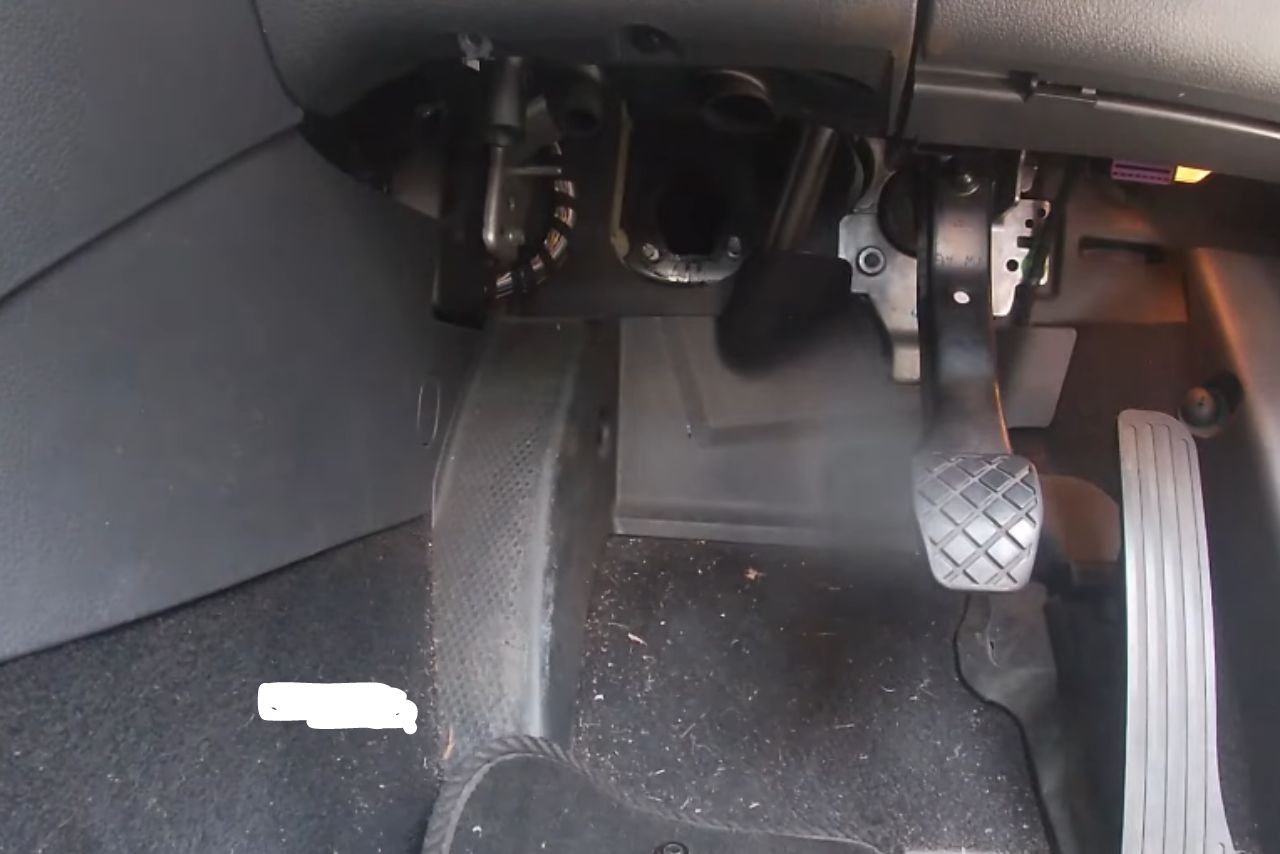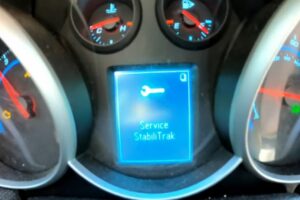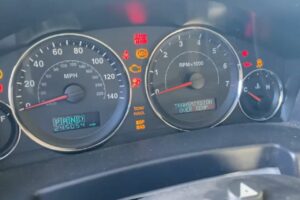If you’re wondering, “Why is my VW clutch not returning?”, the short answer is that it could be due to a faulty slave cylinder or air trapped in the hydraulic line.
Your journey with your trusty Volkswagen may hit a bump when you experience this issue. In this article, we’ll explore possible causes and remedies for your VW clutch not returning back to its original position after being depressed.
Experiencing a VW clutch not returning? If the pedal sticks to the floor, it may be a faulty clutch master cylinder requiring replacement. For a non-returning clutch, a malfunctioning slave cylinder could be the culprit, necessitating a replacement. If the pedal stays down, check for low hydraulic fluid and leaks, topping up the fluid as needed.
Table of Contents
Why Is My VW Clutch Not Returning? Causes & Fixes:
| Issue | Cause | Fix |
|---|---|---|
| Clutch not returning | Bad Slave Cylinder | Replace slave cylinder |
| Inconsistent engagement | Worn Clutch Disc | Replace clutch disc |
| Sticking to the floor | Bad Clutch Master Cylinder | Replace master cylinder |
| Pedal stays down | Low Hydraulic Fluid | Top up fluid; check for leaks |
1. Diagnosing the Clutch Problem:

Problems with a VW clutch not returning can be traced to several common issues. Here’s how to diagnose them:
Check the Clutch Master Cylinder
Look for leaks around the cylinder.
If fluid levels are low, you may have found your problem.
Inspect the Clutch Slave Cylinder
Again, check for leaks.
A faulty slave cylinder could prevent proper clutch operation.
Evaluate Hydraulic Line Condition
- Damaged or pinched lines can restrict fluid flow.
Examine Clutch Pedal Assembly

- Wear and tear on this assembly might affect pedal return.
Check Transmission Fluid Levels
- Low transmission fluid can also cause shifting problems.
| Possible Issue | Diagnostic Action |
|---|---|
| Master Cylinder | Check for leaks; verify fluid level |
| Slave Cylinder | Inspect condition; look for leakage signs |
| Hydraulic Lines | Evaluate line condition; look for damage or pinch marks |
| Pedal Assembly | Examine assembly wear and tear |
| Transmission Fluid Level | Verify correct fluid volume |
These steps should help identify most causes of Volkswagen’s clutches not returning properly. However, in some cases, professional diagnosis may be required if these checks do not reveal any obvious issue.
2. Checking for Hydraulic Fluid Leaks:
If your VW clutch isn’t returning, one possible culprit is a hydraulic fluid leak. Here’s how to check:
Inspect the Ground:
Look for puddles of fluid under your car after it has been parked for awhile.
Examine the Clutch Master Cylinder and Slave Cylinder:
Check these parts for any sign of leakage.
The master cylinder is typically located on the driver’s side firewall.
The slave cylinder can be found near the transmission.
Check Brake Fluid Levels:
Since some vehicles use brake fluid in their hydraulic clutch systems, low brake fluid levels could indicate a leak.
Keep in mind that hydraulic leaks aren’t always easy to spot! If you’re still having trouble with your VW clutch not returning, consider seeking professional help!
| Step | Action |
|---|---|
| 1 | Inspect ground |
| 2 | Examine cylinders |
| 3 | Check brake fluid levels |
Remember: safety first! Always make sure your vehicle is securely parked before performing any inspections or repairs.
3. Inspecting the Master Cylinder:
When your VW clutch isn’t returning, one potential culprit could be the master cylinder. Here’s how to inspect it:
Locate the Master Cylinder:
Find this component near the driver-side firewall in the engine bay.
Check for Leaks:
- Look around and below the master cylinder.
- Spot any fluid leakages.
Examine Fluid Levels:
- Open master cylinder cap.
- Check brake fluid level is at or above MIN line.
Assess Condition of Brake Fluid:
Fresh: Straw-like color
Contaminated: Dark, cloudy appearance
| Condition | Color |
|---|---|
| Fresh | Straw-like |
| Contaminated | Dark & Cloudy |
Inspect Cylinder Seals
- Push against clutch pedal with moderate pressure.
- Watch for leaks around seals while pedal depressed.
If you observe any leaks, low fluid levels, or contaminated brake fluid during these inspections, it may indicate a problem with your VW’s master cylinder that needs further attention from a professional mechanic.
4. Examining the Slave Cylinder:
When facing issues with your VW clutch not returning, one potential culprit could be a faulty slave cylinder. Here’s how you can examine it:
1. Locate the Slave Cylinder
- In most VW models, find this component on the transmission casing.
- Look for a small cylindrical part connected to hydraulic lines.
2. Check for Leaks
- Leaking fluid signifies trouble in your cylinder.
- Keep an eye out for brake fluid around the area.
3. Inspect External Damage
- Scratches or dents may indicate exposure to excessive force or impact.
| Signs of External Damage | Possible Causes |
|---|---|
| Dents | Collision damage |
| Scratches | Incorrect tool use |
4. Test Clutch Pedal Pressure
- Lower than normal pressure might mean there’s something wrong with your slave cylinder.
Remember that if you’re unsure about any step of this process, consulting a professional mechanic is always best!
5. Testing the Clutch Fork:
When dealing with a VW clutch not returning, it’s crucial to check the clutch fork. Here’s how you do it:
If visual inspection doesn’t reveal any problems but issues persist, try testing for less obvious faults.
Table: Clutch Fork Fault Testing
| Test | Procedure | Expected Result |
|---|---|---|
| Pivot Point Wear | Rock fork side-to-side. Excessive movement indicates wear. | Minimal play in pivot point |
| Release Bearing Wear | Push on release bearing. Roughness or resistance may indicate wear. | Smooth operation/no resistance |
Remember – consistency is key! All tests must be done multiple times to ensure accurate results.
In case of persistent problems despite no visible issues with the clutch fork, consider consulting a professional mechanic for further diagnosis and repair options.
6. Assessing Clutch Cable Tension:
When your VW clutch isn’t returning, it might be due to insufficient tension in the clutch cable. Here are some steps you can take to assess this:
If it feels loose, here’s what you should do next:
To better understand these steps, refer to this table:
| Steps | Description |
|---|---|
| 1 | Locate Clutch Cable |
| 2 | Feel for Slackness |
| 3 | Adjust Cable Nut |
| 4 | Test Drive |
Remember – issues with your clutch may indicate more severe problems. If adjusting doesn’t fix your issue or if you’re unsure about doing it yourself, don’t hesitate to seek professional help!
7. Identifying Worn or Damaged Components:
Your VW clutch not returning can be an aggravating issue. It’s crucial to identify worn or damaged components that might cause this problem.
Possible Causes:
How to Identify Issues:
If you notice any of these signs, take your vehicle in for service immediately!
| Component | Sign Of Damage |
|---|---|
| Clutch Disc | Difficulty changing gears |
| Release Bearing | Grinding noise when pressing/releasing pedal |
| Master Cylinder | Fluid leaking under car |
Remember, a non-returning VW clutch is often a symptom of more significant issues!
8. Adjusting the Clutch Pedal Position:
For a VW clutch not returning, adjusting the pedal position may be necessary. Follow these simple steps:
Locate the Clutch Pedal:
The clutch pedal is found on the far left of your vehicle’s foot area.
Check for Free Play:
You should have about 12-20mm of free play at the top where you can move your foot without much resistance.
If there’s no free play, adjust as follows:
Loosen Locknut:
- Find and loosen locknut underneath pedal pivot point using a wrench.
Adjust Nut:
- Turn adjustment nut until desired amount of free play is achieved.
| Required Tools | |
|---|---|
| Loosen Locknut | Wrench |
| Adjust Nut | Pliers |
Tighten Back
- Tighten locknut back up after making adjustments.
Test Drive
- Take car out for test drive to ensure smooth shifting with adjusted clutch pedal position.
Remember, safety first! Make sure vehicle is turned off when performing this process and use correct tools to avoid any damage or injury.
9. Replacing a Faulty Clutch Release Bearing:
When the VW clutch doesn’t spring back as it should, often the culprit is a faulty clutch release bearing. No need to fret! Here’s how you can get your hands dirty and replace it yourself:
Collect Your Tools:
Gather everything needed for this repair job.
Raise the Car:
Utilize your hydraulic jack and lift the front end of your vehicle off the ground.
Remove Gearbox & Old Bearing:
Install New Bearing:
Place new bearing onto input shaft of transmission.
Ensure that it is seated correctly before reassembling.
Reassemble Gearbox & Lower Vehicle
Here’s a handy table summarizing tools required:
| Tool | Purpose |
|---|---|
| Socket Set | Removing bolts |
| Screwdriver | Assisting in removal |
| Hydraulic Jack | Lifting car |
| Jack Stand | Securing lifted car |
Remember: Always consult with an expert if unsure about any step in this process! Safety first!
Here’s a video on possible fix:
Troubleshooting Other Possible Causes:

If your VW clutch isn’t returning, there could be various culprits. Here’s a brief rundown of the possible causes:
Consider these solutions:
- Inspect and replace any faulty parts
- Regularly change your car’s transmission fluid
- Ensure all components are properly lubricated
Here is a table summarizing common symptoms related to each cause:
| Cause | Symptoms |
|---|---|
| Faulty Clutch Master Cylinder | Unresponsive or loose-feeling clutch pedal |
| Worn Out Clutch Disc | Grinding noises during gear shifts |
| Malfunctioning Slave Cylinder | Stuck or hard-to-move pedal |
Remember that while diagnosing car troubles can often be done at home, repairs should always be left to professionals unless you’re trained in automotive repair!
Conclusion and final thoughts
It’s pivotal to address your VW clutch not returning issue promptly. Ignoring this problem could lead to more severe and costly damage in the long-run.
Remember, the clutch is a vital part of your vehicle that ensures smooth gear shifting and overall driving performance.
Whether it’s low fluid levels, air bubbles in the hydraulic system or worn-out parts causing the trouble, these can all be fixed with proper maintenance.
Don’t hesitate to seek help from a professional mechanic if you’re unsure about anything. They have extensive knowledge and experience dealing with such issues frequently.
Keep up with regular car servicing schedules for peace of mind on all journeys. Your VW deserves nothing less than optimal condition; after all, it’s more than just a mode of transport – it’s an extension of you.
Latest Posts:
- Can WD-40 Remove Scratches on Cars? (Hint: Yes, but…)
- Can You Use a Drill to Polish Your Car? (We Tried it Out!)
- Should You Cover Car Scratches With Stickers? (REVEALED!)
- Buick Service Stabilitrak: (Causes & 100% Guaranteed Fix!)
- Common Holden Trax Problems (Causes & 100% Proven Fixes!)
- Jeep Commander Transmission Over Temp: (Guaranteed Fix!)











Leave a Reply